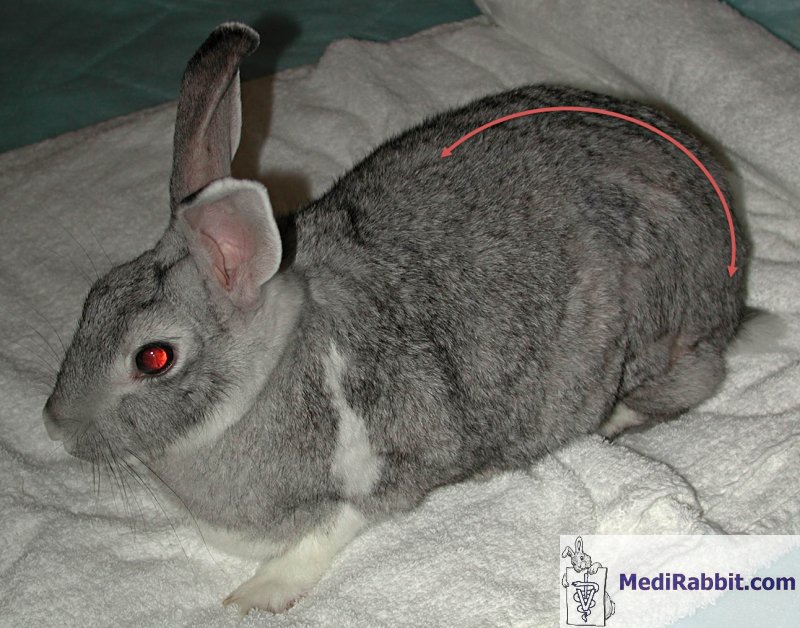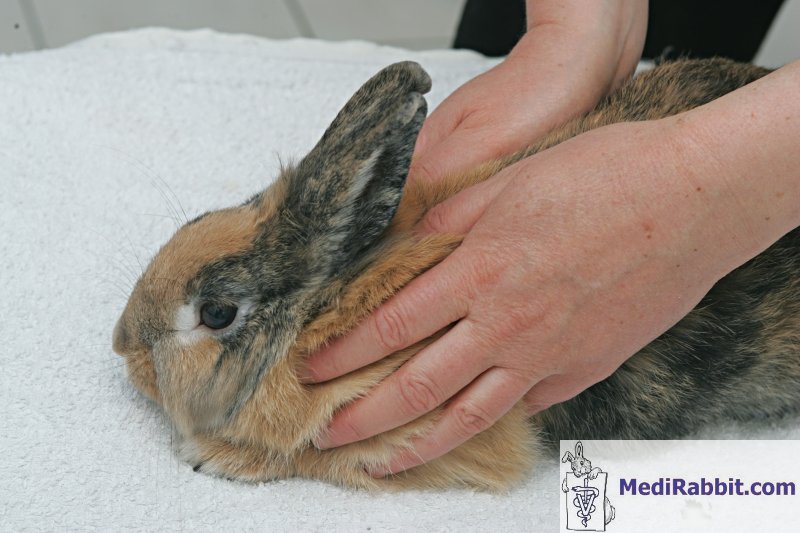Safe examination of a rabbit
Esther van
Praag, Ph.D.
MediRabbit.com is
funded solely by the generosity of donors.
Every
donation, no matter what the size, is appreciated and will aid in the continuing
research of medical care and health of rabbits.
Thank you
|
During a visit at the veterinarian, the rabbit
is be taken out of the carrier and carried to the examination table. There
are several safe methods of carrying, see: Safe
carrying of a rabbit
To enable a safe physical examination of the rabbit, it is
imperative to cover the examination table with a non-slippery material,
covered with a blanket or towel, to avoid sliding. Since rabbits are ground
dwelling animals, and do generally not like height, the examination can also
be done with the veterinarian sitting on the floor or on a chair, and placing
a towel on his/her lap.
After picking the rabbit out of the carrier and placing it on the
examination table or lap, it is important to respect the natural curving of
the back, arched downwards, to prevent twisting, and not stretch it in the
length, with risk of causing a vertebral luxation or fracture.
Before the examination itself, it is important to calm the
rabbit. This can be done by petting gently over the head and body, and
covering the eyes. Some rabbits are able to calm down to the point of
starting to “purr” and softly grind their teeth. The following illustrations show general and safe methods of containing
a rabbit. The assistant stands or sit on the side of the table and approaches
the rabbit from the side or the back with slow and calm movements. Depending
on the experience of the veterinarian, the size and weight of the rabbit, the
approach may slightly differ. As a rule, the rabbit should NEVER be left without
surveillance on the examination table
!!!
After the examination, the rabbit is carried back to the transport carrier. The easiest way to bring back into the carrier is to hold the rabbit in a way that its head faces the person holding it when lowering the hind-part of the rabbit through the top opening, followed by the upper body. If the carrier has only a front door, the rabbit is put inside, bottom first. Thanks
to Yara, Kaspi and Grijsje for demonstrating various restraint methods. |
||||||||||||||||||||
e-mail: info@medirabbit.com

















